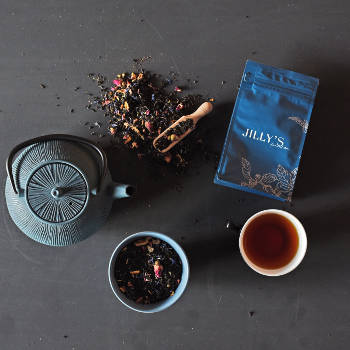About Jilly's
JILLY'S FAVOURITES
Jilly has been selecting fine teas for a long time and only the best make their way into the Jilly’s Fine Leaf Tea Range.
Definitive character and full flavours are embodied in each unique blend. With a range of over 25 different offerings and an assortment of varieties, there’s something for even the most discerning of tea drinkers.
There is a great deal of poetry and fine sentiment in a chest of tea. – Ralph Waldo Emerson
The journey, starting with the first pickings of the leaves from the bush through to the pouring of the perfect cup of tea, is one of careful selection, meticulous preparation and satisfying completion.
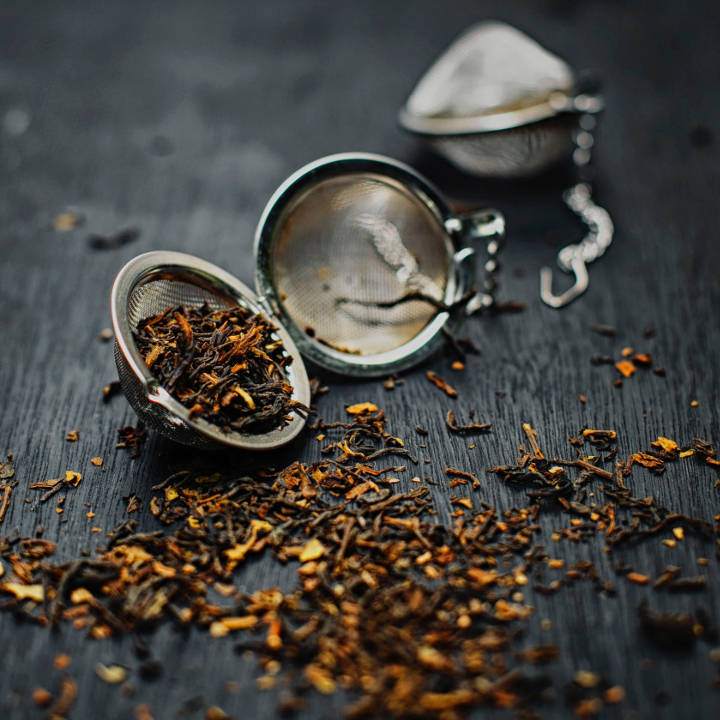
"Life's pleasures lie in the simple things shared and savoured.
A leaf, a hand, a pot...
A moment in time. Drink it in."
PROCUREMENT
There are many tea gardens throughout the world, each with their unique characteristics and offerings. Choosing from these involves constant focus on providing quality tea of the highest standards.
We search among the worlds of tea, herbs and flowers to ensure that each element of our blends meets the standards we aspire to of quality and freshness.
HAND BLENDED & PACKAGED
On arrival in our blending rooms in Maclean, our teas are documented and carefully stored. Through meticulous cupping, quality is checked so consistent blends are created.
Factors such as climate, and the timing of harvest affect the quality of the leaf. It is our privilege to not only enjoy this process but to adjust our blends to produce a beautiful cup. We hand blend our teas not only to carefully move the fragile herbs and leaves, but to add the extra element of care and alchemy as they have done for thousands of years.
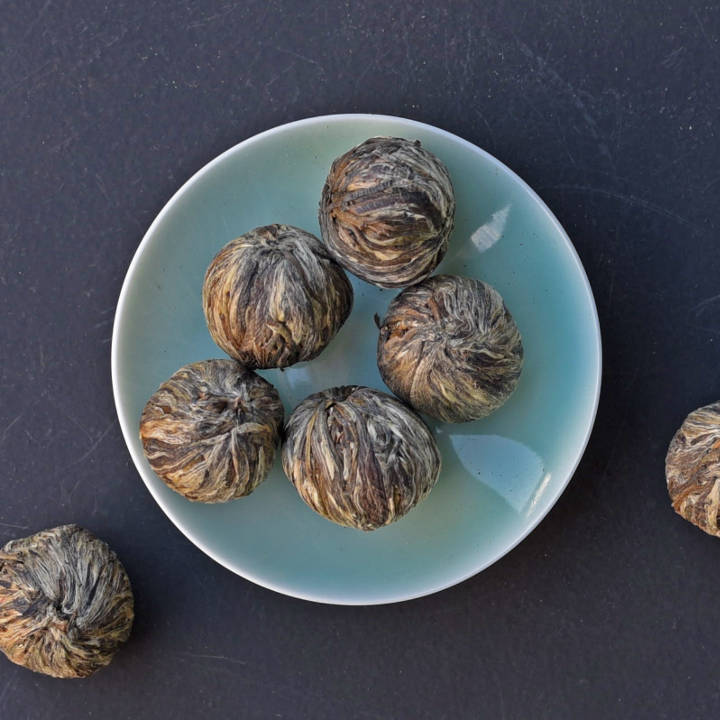

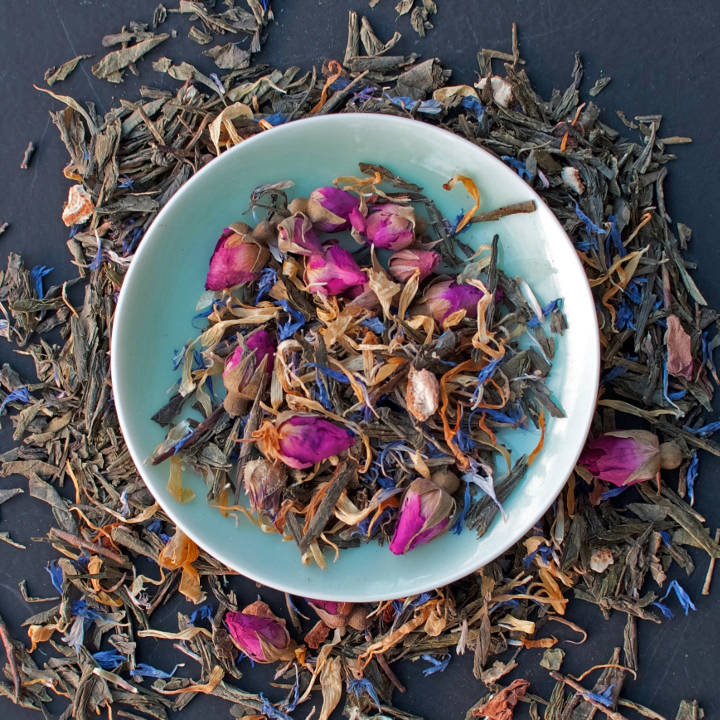
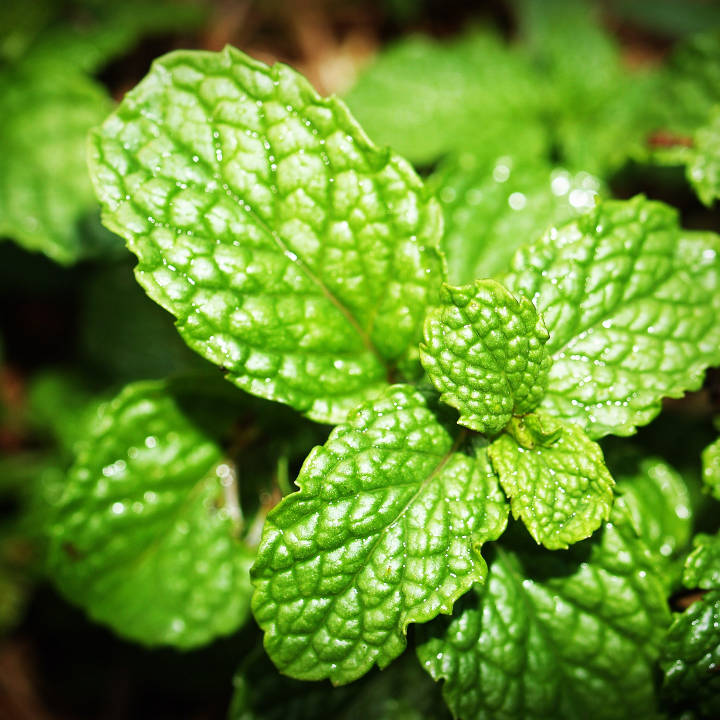
THE STORY OF JILLY'S TEAS
FROM FINE LEAF TO FINE TEA: HOW A JILLY'S TEA IS MADE
Ethical
The decision is a simple one really. It always comes back to quality over quantity, the sublime over mediocrity. It’s in the transparency of process, in the respect owed to the origins of the tea, and those lives that intertwine with ours when we sip on this shared beverage. This forms part of the process when we source tea from the most beautiful tea gardens in the world. From the high-altitude tea gardens of India to the plantations of Sri Lanka, and the hills of China, steeped in history.
Anticipation
There is always a level of excitement upon the arrival of a new shipment of tea at Jilly’s. It represents a renewal. It is a fresh picking of the finest leaves and buds the Camellia Sinensis plant has to offer in the season. Here, the tea is again sampled, and the batch and characteristics recorded. We process our tea in small batches to deliver to you the freshest cup.
Botanically Pure
All tea is beautiful in and of itself and we choose to always offer it in its original form.
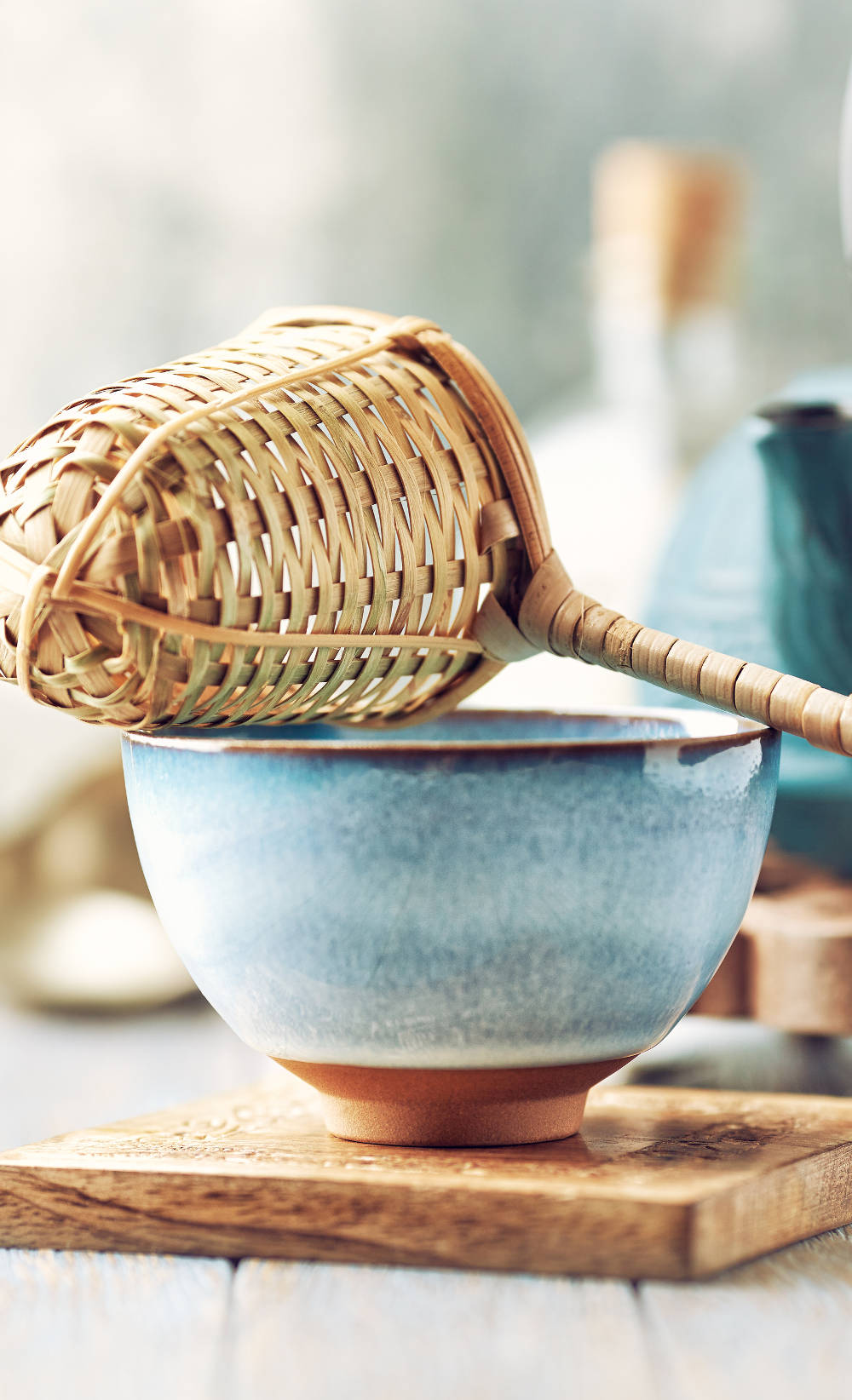
Hand Blended
The choice to blend a selected tea with herbs is carefully researched. To select herbs that will compliment not dominate, the healing properties and origin of each herb is studied. Creating a blend of Jilly’s tea is a methodical and considered process involving multiple tastings over many days. It’s a pleasurable process, and a privilege to select from nature’s finest and most beautiful plants to create a beverage both visually beautiful and therapeutically beneficial.
Packaged With Care
Exposure to light and air will deteriorate the quality and freshness of tea. Immediately upon blending, our Jilly’s tea offerings are packaged in tins or resealable refill bags designed to maximise the enjoyment of your tea.
A Deconstructed Blend
The creation of a tea blend begins like many other creative processes. There is a vision of what you want to achieve from the cup. Sometimes it’s as simple as the delivery of a beautiful tea in its most pure form. Other times, it is to enhance those leaves with complimentary and inspiring flavours. Within the world of herbs, lies a very exciting challenge of blending for therapeutic healing as well as the satisfying of sensory and aromatic tastes.
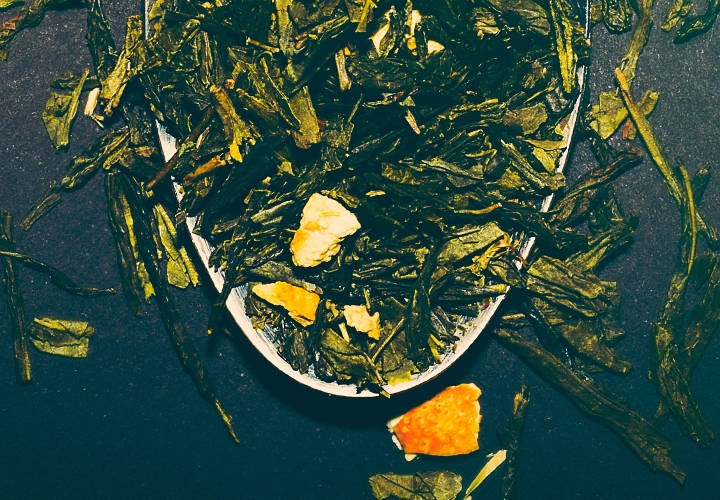
HOW IS TEA MADE?
As with grapevines, different tea leaf varieties develop unique characteristics based on soil composition, weather patterns and different growing conditions. However, all tea leaves goes through the same stages of processing: plucking, withering/steaming, rolling, oxidisation and drying/firing, to produce the different tea varieties that are available.
Read More
Plucking: First, the bud and two small leaves are picked from the best tea plants, to ensure the highest quality product.
Withering/Steaming: Particularly important to white, oolong and black teas, the leaves are then laid out to dry, or wither, on bamboo trays, reducing water content and making the leaves pliable enough for rolling. Sometimes, if the climate is too cool for outside withering, they are laid in large in-door areas and heated air is forced over them.
Green teas are withered very briefly or sometimes not at all. Instead, they may often be steamed, baked or pan-fried, which stops the oxidisation process, leaving the leaves green and giving the final product its distinctive colour.
The more oxidisation a tea leaf undergoes during processing, the darker it’s infusion. The greener the leaf, the lighter the tea will be, whereas darker teas are the result of a longer oxidisation process.
Rolling: Traditionally done by hand but now often undertaken by machines, the rolling process helps to break down the cell structure in the leaves, releasing the oils and juices. It also encourages a more uniform oxidisation of the leaves.
Drying: The final stage in the process is to dry the leaves, either in drying machines or large ovens, which halts the oxidisation process completely, resulting in the unique flavours and characteristics that are enjoyed in that particular tea.
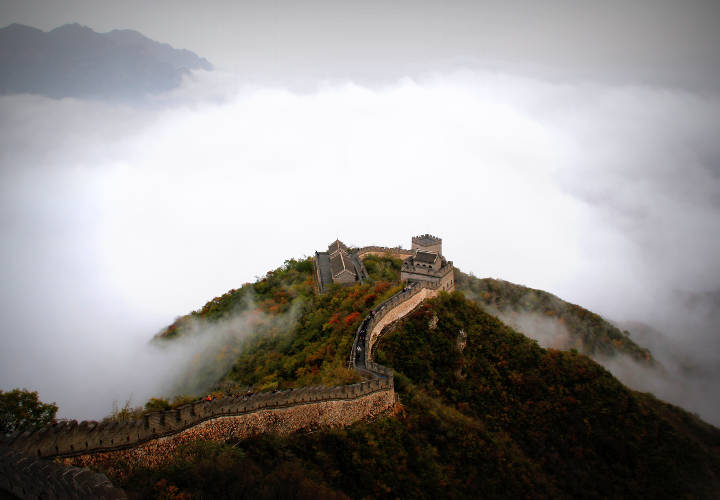
THE HISTORY OF TEA
The history of tea is long and intricately connected across many cultures, spanning thousands of years. Tea drinking most likely originated in southwest China during the Shang dynasty, around 1500BC, where it was consumed as a medicinal drink. The Yunnan Province, in China, is said to have the oldest cultivated tea tree in the world, at some 3,200 years old.
Read More
Tea was first introduced to Europe from the Asian continent in 1555 by the Italian traveler, Giovanni Battista Ramusio, and was called “Chai Catai”. Green tea, exported from China, was first introduced in the coffeehouses of London in early 1657 and by 1659, was sold in almost every street in London.
By the 1720s, black tea had overtaken green tea in popularity and between 1720 and 1750, the imports of tea to Britain through the British East India Company more than quadrupled. The British had adopted the custom of adding milk and sugar to tea, a practice that wasn’t done in China. Interestingly, during the 18th century, the growth of the tea industry closely paralleled that of the sugar industry.
Today, tea has been introduced to over 52 countries around the world and is enjoyed in many forms by over 2 billion people a day.
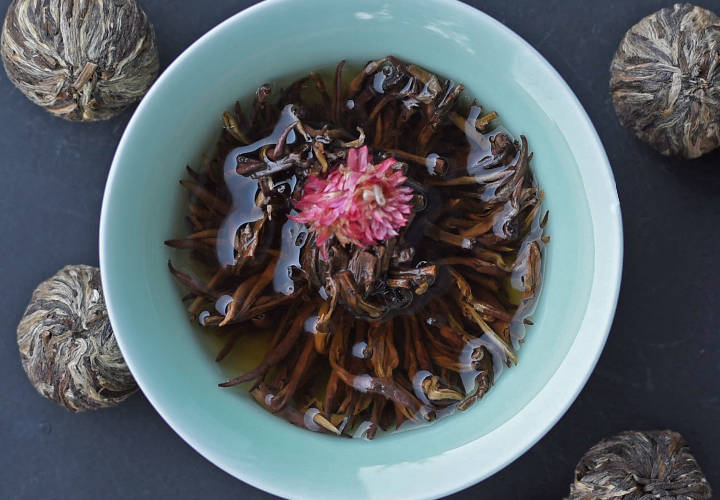
TEA BLENDS
The aim of tea blending is to create a well-balanced flavour, using different origins and characters. Even though all tea comes from the same tea bush, Camellia Sinensis, a variety of drinking teas are produced from the leaves as a result of different processing and blending methods. Well known teas, such as Earl Grey and Darjeeling, actually all come from the same tea bush!
Read More
All tea – black, green, white – comes from the same plant! What makes the difference to the type (and colour) of tea is the level of oxidisation. Generally, the more oxidisation a tea leaf undergoes during processing, the darker it’s infusion. The greener the leaf, the lighter the tea will be, whereas darker teas are the result of a darker (more oxidised) leaf.
A variety of flowers and herbs are often added to tea blends for flavour and health benefits. In the Jilly’s Fine Leaf Tea range, you will find teas containing lemon and orange notes, lemongrass, ginger and peppermint, bergamot, chamomile, cornflowers and rose, among many others.
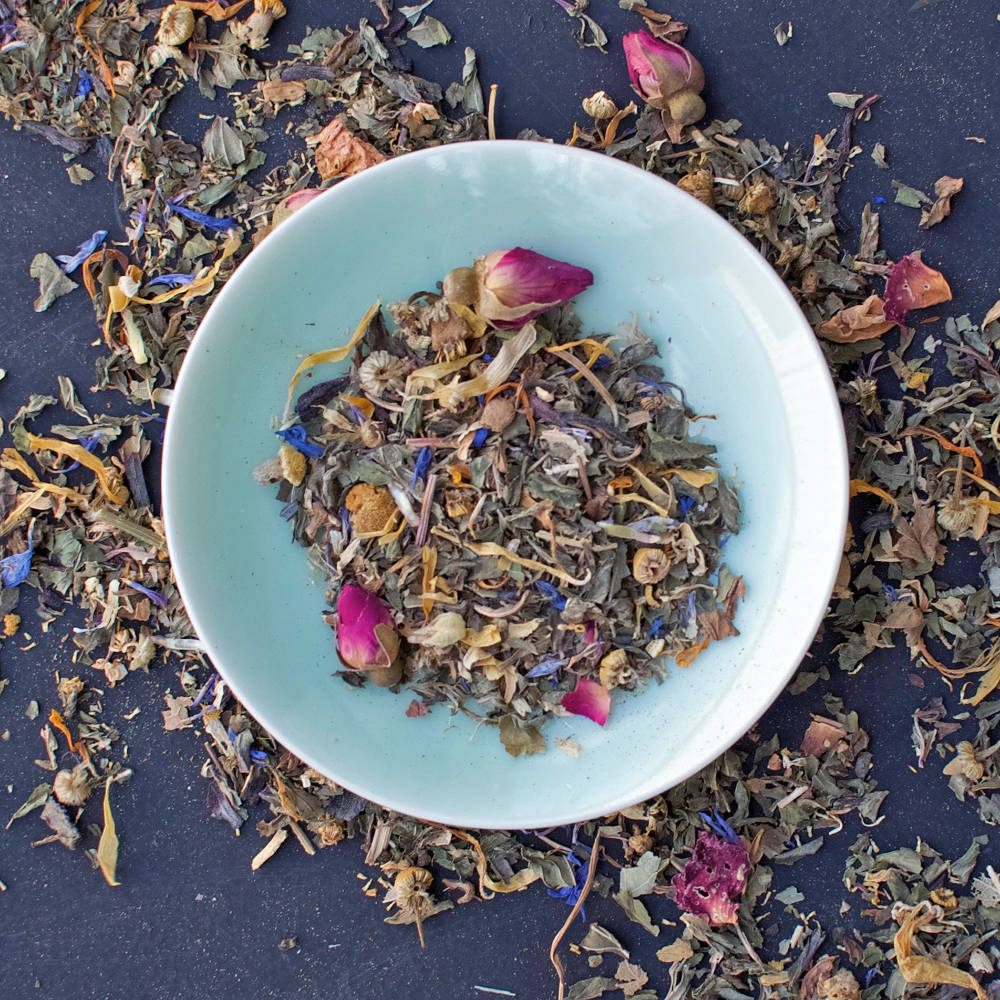
FEATURED BLEND: REST & RELAX
This gorgeous little Jilly’s blend began to take shape over a rainy weekend in 2016. The end goal: to drink from a pot of tea that was enjoyable but delivered on its promise of relaxation.
For several weeks previously, herbs were researched for their therapeutic properties, for the way they interacted with other herbs and as much information as could be was gathered to their origins, plantings and harvesting processes. Then the fun began – the blending of varying quantities of the selected herbs and the multiple tastings and blind tastings of the blend over the course of days.
The process started out well enough, but by the end of the first day we found ourselves unable to stay awake, and far too deep in blissful relaxation to focus on the task at hand. So, I guess you could say the blend worked as intended but the quantities consumed were well above the recommended amounts for meaningful tasks to take place!
And so a blend was born; mingling peppermint and chamomile, linden leaves and flowers, roses and calendula with hibiscus and cornflowers. All elements beautiful to look at and powerful in effect.




